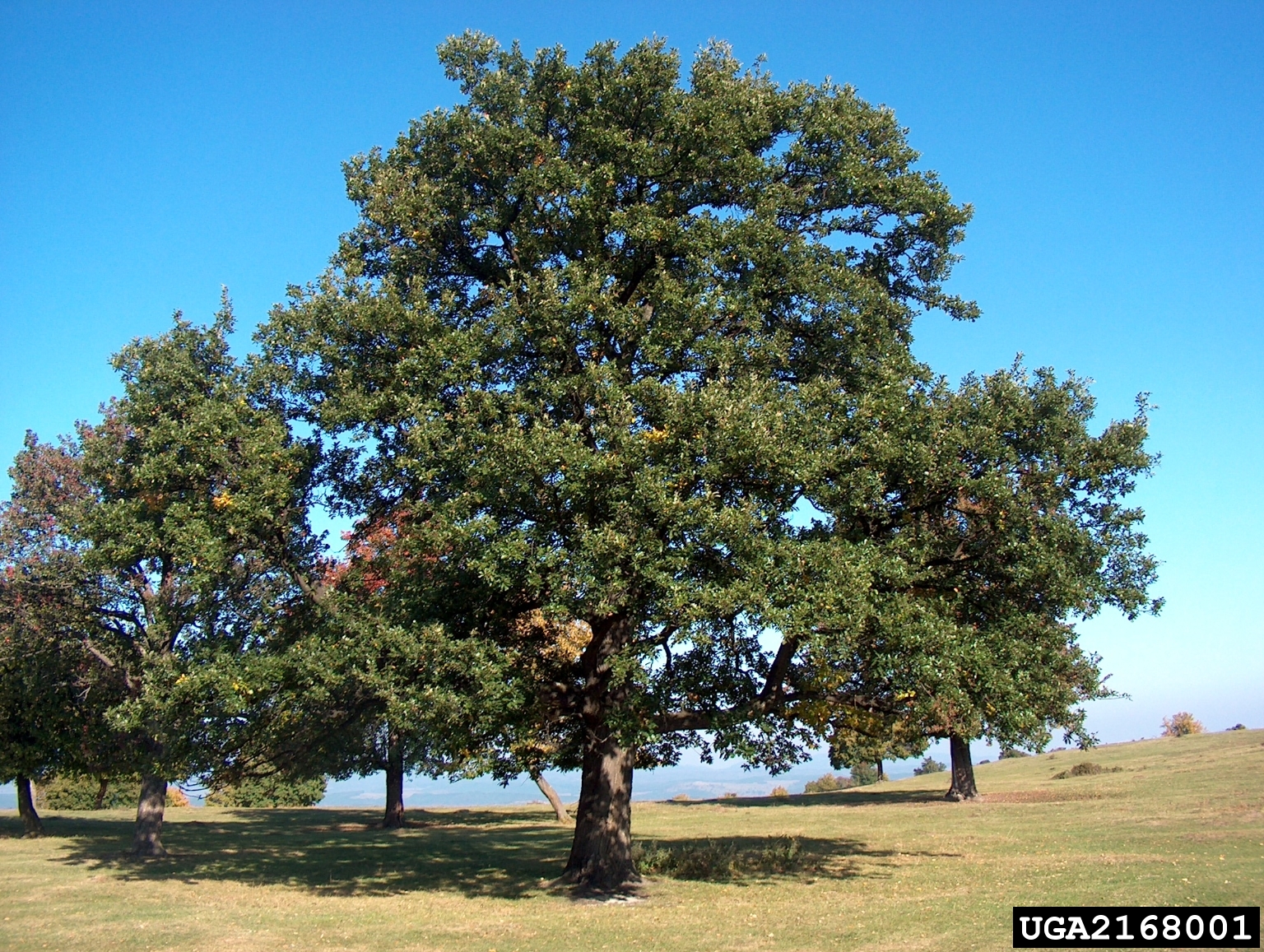English Oak
 Quercus robur, or English oak, is native to Europe, northern Africa, and western Asia.
Quercus robur, or English oak, is native to Europe, northern Africa, and western Asia.
Mature Size
It is part of the white oak family and will grow to a height and width of about 30-40 feet.
Growth Rate
Although it will geographically grow anywhere in Kansas and does best on moist, well-drained soils, its greatest use-potential is in the western-half of Kansas. It has shown to be extremely drought tolerant and its leaves will maintain their dark green appearance despite relatively high pH levels. Although it is not near as large or long–lived as bur oak, it is a quicker growing species under dry conditions and growth of 12-18 inches a year is not uncommon, even in far west Kansas.
Leaves, Stems, and Fruit
The leaves are simple and alternately arranged on the twigs. They are 4 to 8 inches long and 2 to 4 inches wide with the broadest portion toward the outer end of the leaf. The leaves are very similar to white oak and are a very dark green in color. Young twigs are light brown. Flowers appear in April or May with both male and female flowers borne on the same tree. The fruit appears slightly slender being approximately ¾ to 1 inch in length and not very wide. The cap covers about 1/3 of the acorn. The bark of older trees is light to medium grey with moderately ridged furrows at maturity.
Use
Windbreaks - Because of its adaptability to droughty conditions and its tolerance of high pH levels, English oak is an excellent choice in windbreaks of western Kansas. It does not tolerate shaded conditions very well; therefore, it should not be planted adjacent to fast-growing species which might over top it without adequate space between species.
Wildllife - Acorns constitute a good staple food for a variety of birds and animals. Woodpeckers, jays, flickers, squirrels, whitetail deer and gamebirds such as wild turkey will consume the acorns.
Adaptation and Soil
Although it does best on deep, well-drained soils, English oak is very adaptable to extremely droughty conditions and high pH levels. It has shown to grow remarkably well in the western-half of Kansas despite its notoriously difficult conditions and is showing excellent potential to be used for windbreaks and for creating wildlife habitat.
Spacing
It is normally spaced 10 to 18 feet within the row. Space the rows 20 to 24 feet from adjacent trees or shrubs to prevent the oak from over-growing smaller plants or to prevent fast growing plants from over-growing the oak.
Culture
One-year-old, container-grown seedlings, 12 to 18 inches tall are used in plantings. Survival is generally good. Initial growth is centered around root development. Two to three years after planting, top growth should average 12-18 inches annually.
Pests
Where there is high humidity, English oak’s greatest pest is powdery mildew. Although it will grow geographically throughout Kansas, planting in the eastern third of Kansas will likely result in the development of this disease during mid- to late summer. Although the white-appearing fungus is unsightly, it generally has no affect on the tree’s health whatsoever.